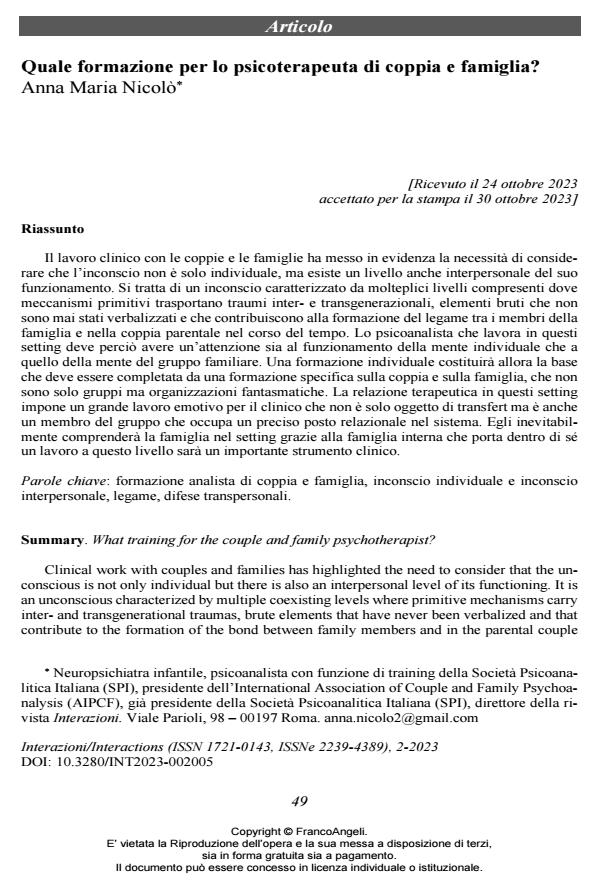What training for the couple and family psychotherapist?
Journal title INTERAZIONI
Author/s Anna Maria Nicolò
Publishing Year 2023 Issue 2023/2
Language Italian Pages 9 P. 49-57 File size 166 KB
DOI 10.3280/INT2023-002005
DOI is like a bar code for intellectual property: to have more infomation
click here
Below, you can see the article first page
If you want to buy this article in PDF format, you can do it, following the instructions to buy download credits

FrancoAngeli is member of Publishers International Linking Association, Inc (PILA), a not-for-profit association which run the CrossRef service enabling links to and from online scholarly content.
Clinical work with couples and families has highlighted the need to consider that the unconscious is not only individual but there is also an interpersonal level of its function-ing. It is an unconscious characterized by multiple coexisting levels where primitive mechanisms carry inter- and transgenerational traumas, brute elements that have never been verbalized and that contribute to the formation of the bond between family mem-bers and in the parental couple over time. The psychoanalyst working in these settings must therefore pay attention to both the functioning of the individual mind and that of the family group mind. An individual training will then form the basis that must be com-pleted by specific training on the couple and the family, which are not just groups but phantasmatic organizations. The therapeutic relationship in these settings requires a great deal of emotional work for the clinician who is not only an object of transference but is also a member of the group who occupies a precise relational place in the system. He will inevitably understand the family in the setting thanks to the internal family he carries within him and a job at this level will be an important clinical tool.
Keywords: couple and family analyst training, individual and interpersonal unconscious, link, transpersonal defences
Anna Maria Nicolò, Quale formazione per lo psicoterapeuta di coppia e famiglia? in "INTERAZIONI" 2/2023, pp 49-57, DOI: 10.3280/INT2023-002005